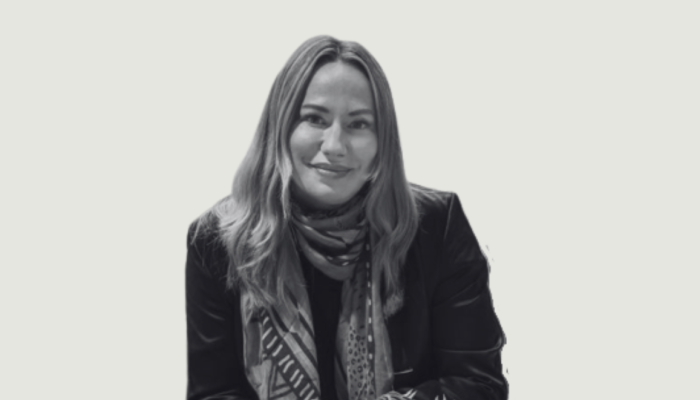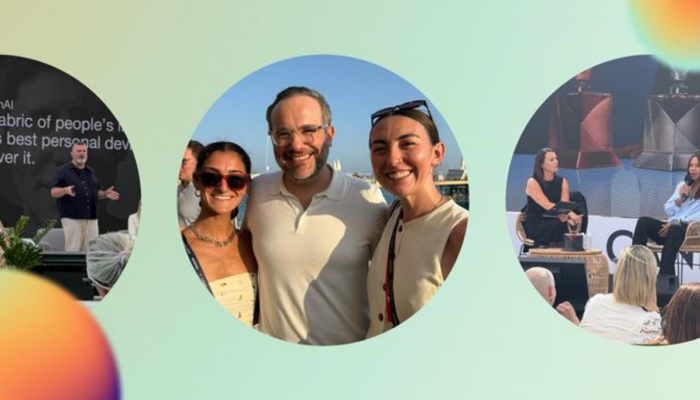What if women could passively track their health, using blood collected from the tampons they already use?
Ridhi Tariyal is exploring this premise with NextGen Jane, the company she cofounded in 2014 along with scientist Stephen Gire.
After earning an MBA degree at Harvard Business School and a Master’s in Biomedical Enterprise at MIT, Tariyal found herself facing questions about her own future and how to balance career and family planning.
Below, Tariyal chats with us about how this conundrum led to NextGen Jane, and how her company can empower today’s women.
What was the inspiration for NextGen Jane?
In 2013, I joined the Blavatnik Fellowship at Harvard for recent graduates of the business school. The purpose of the fellowship is to place MBAs in labs across the university where technologies are being developed. We were given the opportunity to flesh out market applications in health for these technologies. The goal is to commercialize life science–based enterprises at the end of the fellowship.
I was part of the first class, and we were given carte blanche access to Harvard’s IP portfolio, and, obviously, you can imagine the IP portfolio at Harvard is massive.

Ridhi Tariyal and Stephen Gire
At the same time, I was 33, and I was curious as to how much time I had to have a family and the career I wanted. Startups are hard, time consuming and a long haul. But I also want to have kids, and I didn’t want it to surprise me.
I thought, there must be some way to quantify my “fertility window.” I went to my doctor and she said, “There’s nothing I can tell you or do for you. There’s no biological hormone that will demystify this question for you.”
I’m in the sciences, so I wanted to find out for myself and told her, “I’ll be back.” I did some research and, of course, there is a hormone that is the best proxy for the number of eggs you have left, and it’s called Anti-Mullerian hormone. So, I went back to the same doctor and said “actually, there is a test, I know this hospital has the capacity to run the test.” And astonishingly she still wouldn’t give it to me.
Why was that?
The reason my doctor refused to give me the test, she said, was that there’s no medical question I was trying to answer. “You’re not sick, you don’t have any symptoms, you’re asking me to diagnose something when there’s no problem.”
I thought it was shocking that she wasn’t sympathetic to the fact that it was a data point that would help me. It would give me some idea about the choices that I’m making between my career and future family. Maybe it doesn’t have clear clinical utility to her, but it is of great value to me. And that data point belongs to me!
I asked my girlfriends in New York and California to find out their hormone levels, and they ran into similar hurdles. We’re all dealing with the same dilemma—we’re professionals, we went to grad school, we delayed having kids, and then after grad school we had to focus on paying off grad school loans. Women begin to think about this question more and more. When do I have kids? Do I even want to have kids? How many do I want? Why does this require so much calculation?
When did it hit you that this could be the basis for a company?
Initially, NextGen Jane had nothing to do with a tampon; it was about fertility and empowering women to manage their own reproductive health without paternalistic oversight.
We landed on the tampon because we needed access to a nontrivial amount of blood at home. I went to a hospital and had my blood taken, but that’s not something a woman can do at home. The inconvenience of going to a lab is the bottleneck—how do you transition this entire process from the doctor’s office to the home?
As you keep thinking about it, it naturally occurs to you that women bleed every month—and it’s a non-trivial amount. Currently, we just throw it away and treat it like trash. If there was a way that you could cleanly and seamlessly send that blood to a lab to run tests, that would be powerful.
So, my cofounder Stephen and I said, “How can we do this?” We ended up creating novel IP at Harvard. We then formed NextGen Jane, which had that IP as its core patent technology, and then started thinking about what would be the first, best market application.
What are women able to learn from monitoring their menstrual blood?
It turns out there’s tons of information in menstrual blood. You’re getting access, for example, to the vaginal microbiome. You can characterize the bacteria and flora that you have, which scientists are finding are often signals of disease or health. You’re getting access to uterine tissue that can tell you whether you have a disease called endometriosis. Studies at Johns Hopkinshave shown that, using a tampon, it’s possible to pick up shed tumor cells from ovarian cancer patients.
The company moved beyond trying to provide a way to manage your waning fertility due to natural senescence, and into something much more expansive, which is an attempt to answer, “who is doing long-term reproductive management for women?”
We’ve seen more services recently focused on fertility, such as Prelude, for example. Is there an underlying social trend that you’re responding to?
The average age of having your first child is increasing. It has gone from 21 in 1970 to 26 or 27 in 2014 America, in Japan it’s 30, in Europe it’s 29, and it’s going to go up.
As women enter the workforce, as they continue to get more PhDs and postdocs, they’re going to have kids later and later. There’s a deep demographic shift happening, where even 40 years ago, you had your first child at 20 or 21, and your first period somewhere between 12 and 15.
There used to be a shorter time window where you had to keep your reproductive system healthy to ensure that you could have kids when you wanted to, right? And that means keeping yourself healthy from STIs, heritable conditions, and environmental toxins that are continually making an impact on our bodies.
The long-term effects of these conditions make it more difficult to have kids. If you have kids at 20, you have shortened the amount of time that those factors can make an impact on your fertility. But if you’re having kids in your 30s, you’ve just doubled that timeline.
Yes, and probably more than doubled the risk of a problem.
It is something that plagues so many of us, and the saddest thing is that it’s difficult to talk about, which makes it worse. This anxiety keeps you up at 4am; it burns a hole in your mind, and what resources do you have to talk about it?
That became the central premise of the company. If I’m going to have all these super-smart, career-minded, professional women having kids in their 30s, great! I want them to have that timeline to work and grind and study, and become exactly who they’re supposed to become and maximize and actualize their potential.
But that also means that if they want children, somebody needs to help them manage that increased risk. Our entire thesis is, if you just mail in this tampon, you can monitor yourself. If you have an STI, we will pick it up. If you have a genetic predisposition for a disease and you develop that disease, we will let you know.
We’re going after endometriosis first. It’s a massive opportunity, and I say that both from a medical perspective as well as from a business perspective. 10% of women have this disease, and it takes 10 years to diagnose, on average.
It fits in with our entire thesis because so many women who end up at IVF clinics for infertility have undiagnosed endometriosis—somewhere between 35% and 50% of them. It has a deep impact.
When you present this to consumers, are you going to be packaging yourself as a fertility service
This is going to sound obnoxiously “business school” of me, but we present our value proposition in terms of expanding concentric circles. We say that the core of what we do is long-term fertility management, meaning there are a lot of things that can impact your ability to have kids, and someone should be watching out for those things.
The next circle is reproductive health. If you get cervical cancer, we want to be the first to tell you. If you get ovarian cancer, same thing. We want to tell you whether you have high levels of BPAs or carcinogens like Roundup [a weed killer]. There are so many things that are part of your reproductive health that we currently have no easy way of tracking.
The final circle is general health. If there are signs that you’re having an inflammatory response due to an auto-immune condition like multiple sclerosis, we want the ability to pick it up sub-clinically in a completely novel specimen type.
In the real world, how do women react to the idea of mailing in their tampons?
It’s not willy-nilly; we have an entire beautiful package, and it’s where most of our secret sauce is. If someone just took their tampon and mailed it in, you couldn’t necessarily get anything from it, right? It’s the way that it’s processed that gives you the ability to get something useful from it.
We send this package to you, with very explicit instructions on what to do. The process is simple and intuitive, with the goal of minimizing your interaction with your tampon, limiting it to the extent that you already interact with it!
Instead of wrapping it up and throwing it in the trash can, you’re going to drop it into a device that allows us to do what we need to do to get it back into the lab.
What macro-trends would you say are creating a favorable environment for your product now?
Quantified self is a big one. People want to track certain things about themselves on a consistent basis. Everything from steps to calories have been mapped. But unlike the predictable distance you generally travel on your stable daily routine, your body is always changing. And constant data points are needed to keep up with it. That’s part of why we love anchoring our product and science on a monthly process.
The unfortunate consequence of existing attempts at quantified self is that they reduce beautiful engagements with the world, such as taking a stroll or dining, into a statistic that can be punishing.
What we’re doing with quantified self is the inverse—taking a process that is stigmatized and considered a “trying time of the month” and converting it into the most information-rich and useful time of the month. Our statistics and tracking metrics reduce anxiety so you can more fully engage with the world.
A familiarity and friendliness with genomics is another important trend. Services like ancestry.com and 23andme have acclimated lay users to the power of genetic data in discovering your heritage. Companies like Myriad Genetics give us useful information about our genetic risk for diseases like breast cancer.
Another trend, which is less talked about, is the shortage of doctors. There aren’t going to be enough doctors for the people that need to see them. If you can’t go in to see your doctor to explain to them the complex confluence of symptoms you’re experiencing, you’re going to be very frustrated.
People’s tendency to be their own doctor and sleuth on the internet is a trend that exacerbates their phobias. We want to be able to pull people out of the internet death spiral, and say, let’s start with this tampon test. It’s very easy—mail it in, you don’t leave your home, and we can begin to figure out what’s going on with some real biological data, and not just your symptoms plus your web searches. That access to information is both powerful and dangerous and we are going to continue to have more and more of it.
Women are also becoming more empowered and active agents in their own healthcare. They continue to make most of the healthcare decisions for their family, they make most of the budgeting decisions, and I think as they become more empowered they will want easier ways to learn about themselves. This information is theirs, and we want them to have it.
Finally, there’s a de-stigmatization happening with menstruation. I always say, menstruation is having its moment. People are less “icked” out about talking about it. You can do a quick google search and see more than just blue water and butterflies—the old-school advertising euphemisms for your period.
What would you want marketers and advertisers to take away from this?
Heterogeneity in characters on screen or print ads resonates with the modern woman. Our ideas of identity are so complex, nuanced and rich right now that no one stock image is an honest reflection of how we see ourselves. When I see ads that show a breadth of diversity on screen, I immediately feel at home because I know that’s exactly who I am—some “weird” amalgamation of cultures, languages, and non-traditional lifestyles.
Also, almost predictably, some of my favorite commercials are ones that show people doing the extraordinary. I think there’s a special appeal to women there, too. We’re in a period of dramatic social change right now where we have access to things our moms maybe didn’t. We can accomplish and participate in the world at unprecedented levels. Seeing advertising that shows others doing the impossible bolsters me up and is an affirmation of a key revelation for women: the impossible is now within reach.
The premise of NextGen Jane is to provide tools so women can do just that: get after the impossible.
This article originally appeared on www.jwtintelligence.com





